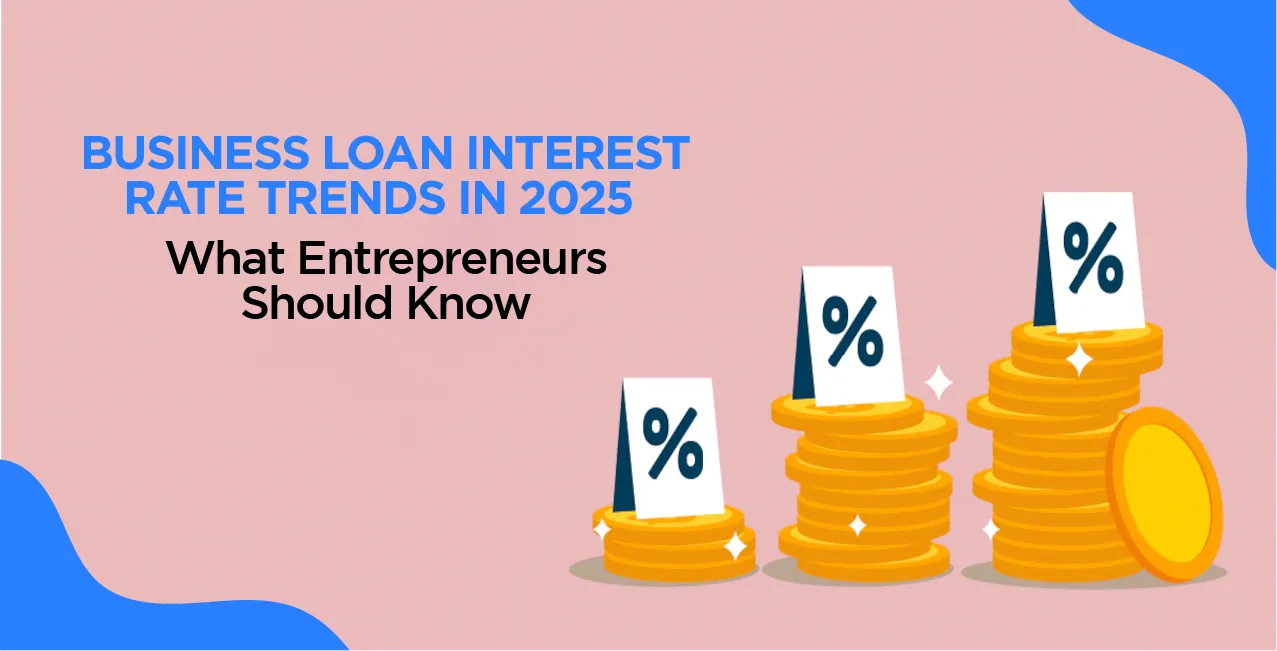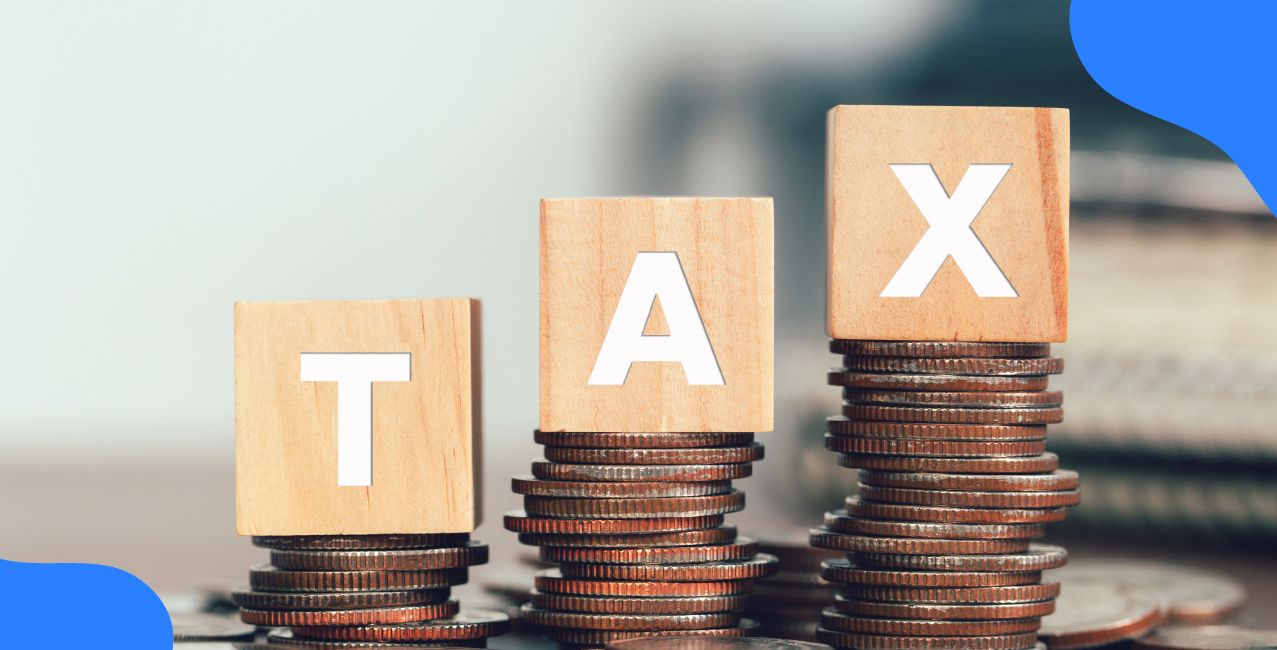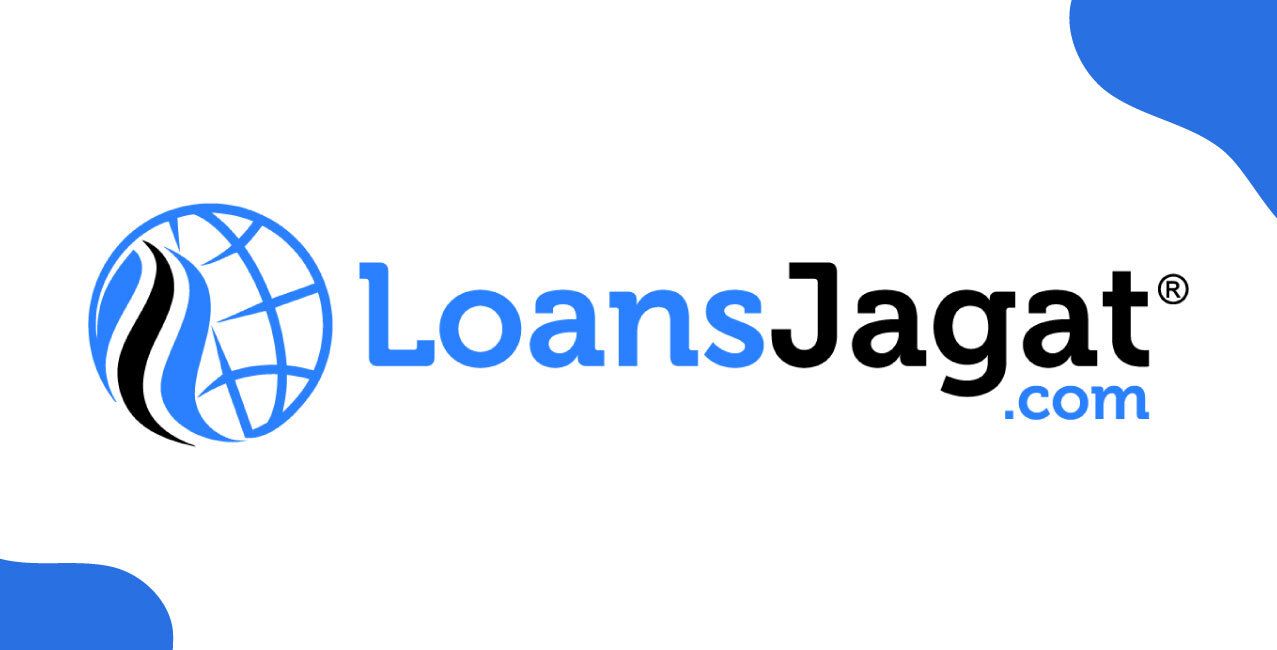
Author
LoansJagat Team
Read Time
10 Min
20 Mar 2025
Business Loan Interest Rate Trends in 2025 – What Entrepreneurs Should Know
In 2025, as India's economy continues to grow, entrepreneurs need to understand the trends in business loan interest rates to make financial decisions.
The Reserve Bank of India (RBI) recently reduced the key policy rate by 25 basis points to 6.25%, marking the first rate cut in nearly five years. This move stimulates economic growth by making borrowing more affordable for businesses.
This rate cut could translate to lower interest rates on various business loans for entrepreneurs. For instance, secured business loans in India typically have interest rates ranging from 10% to 30% per annum, depending on factors like loan amount and borrower creditworthiness.
With the RBI's recent rate reduction, these rates may decrease, making it more cost-effective for businesses to access necessary funds.
Entrepreneurs should stay informed about these interest rate trends as the financial industry evolves to plan their financing options and capitalise on growth opportunities.
How Business Loan Interest Rate Trends in 2025 Impact Entrepreneurs
Ramesh, a small textile manufacturer from Surat, wanted to expand his workshop. He needed a business loan of ₹15 lakh to buy new machines and hire more workers.
When he approached the bank, he was confused.
Some banks offered loans at 10% interest, while others charged up to 22%. Like Ramesh, many entrepreneurs are struggling with changing business loan interest rates in 2025.
Understanding these trends is essential to make the right financial decisions.
Economic Factors Driving Interest Rate Changes
Business loan interest rates depend on various economic factors. In 2025, some key reasons for changes in loan rates are:
1. Inflation and Market Conditions
Inflation affects everything, including loan rates. When inflation is high, banks increase interest rates to balance their risk. For example, if inflation rises from 5% to 7%, banks may increase loan rates by 1-2% to cover their costs.
2. Demand and Supply of Loans
If many businesses want loans, banks may increase interest rates. However, if fewer businesses take loans, banks reduce rates to attract more customers. In early 2025, more companies will take loans, so banks keep higher rates.
Read More – 8 Common Business Loan Scams to Watch Out for in 2025
3. Credit Score of Borrowers
A good credit score helps lower interest rates. Entrepreneurs with a credit score above 750 can get business loans at around 10-12%. However, those with a score below 650 may get loans at 18-22%.
Central Bank Policies and Their Effect on Business Loans
The Reserve Bank of India (RBI) plays a significant role in deciding interest rates. RBI controls the repo rate, which is the rate at which banks borrow money from RBI. If RBI increases the repo rate, banks increase loan interest rates.
If RBI lowers it, banks reduce interest rates for customers.
Estimated Repo Rate Trends in 2025
Month | Repo Rate (%) | Impact on Loan Rates |
January | 6.5 | Business loans start from 10.5% |
April | 6.25 | Business loans start from 10% |
July | 6.75 | Business loans start from 11% |
October | 7 | Business loans start from 12% |
When RBI increases repo rates, borrowing becomes costlier. For example, if the repo rate rises from 6.5% to 7%, a ₹10 lakh loan at 10% may become 11%, increasing the EMI by ₹1,000 per month.
Impact on Different Loan Types
1. Personal Loans (PL)
- Average loan amount: ₹10 lakh to ₹20 lakh
- Average borrower income: ₹50,000 per month
- Interest rates: 10% to 24%
- Higher rates mean higher EMIs. A ₹10 lakh loan at 10% interest will have an EMI of ₹16,134, but at 12%, it will be ₹17,735.
2. Debt Consolidation Personal Loans (DC PL)
- Average loan amount: ₹15 lakh to ₹30 lakh
- Average borrower income: ₹80,000 per month
- Interest rates: 12% to 22%
- Borrowers take these loans to repay multiple debts, but higher rates make repayments costlier.
3. Overdraft Loans
- Average loan amount: ₹10 lakh to ₹20 lakh
- Average borrower income: ₹75,000 per month
- Interest rates: 11% to 18%
- These are short-term loans, but rising rates make them expensive.
4. Business Loans (BL)
- Average loan amount: ₹10 lakh to ₹20 lakh
- Average borrower turnover: ₹1 crore to ₹2 crore
- Interest rates: 10% to 20%
- Small businesses struggle if interest rates increase. A 2% rise can mean paying thousands more in EMIs.
5. Home Loans (HL)
- Average loan amount: ₹50 lakh to ₹1 crore
- Average borrower salary: ₹75,000 to ₹1.5 lakh per month
- Interest rates: 8% to 12%
- Higher rates mean larger EMIs, making homeownership tougher.
Fixed vs. Floating Interest Rates: What’s Better in 2025?
Ravi, a small business owner in Delhi, wanted to expand his shop. He needed a loan of ₹15 lakh. The bank gave him two choices: a fixed interest rate of 11% or a floating interest rate starting at 9.5%. He was confused. Which one was better?
A fixed interest rate means the rate stays the same throughout the loan period. A floating interest rate changes based on market conditions. Let’s break it down:
Fixed Interest Rate:
- It is best for those who want stability and predictability.
- The EMI (Equated Monthly Instalment) remains the same.
- Even if market rates increase, you still pay the same rate.
Floating Interest Rate:
- Starts lower but may increase or decrease over time.
- The EMI may change, making budgeting harder.
- If interest rates drop, you pay less interest.
Comparison Table
Feature | Fixed Rate | Floating Rate |
Interest Rate | Higher | Starts lower but can change |
EMI | Fixed | Can increase or decrease |
Risk | Low | Medium (depends on market) |
Best For | Long-term stability | Short-term flexibility |
For Ravi, since he planned to repay in 3 years, a floating rate made sense. If he had taken a 10-year loan, a fixed rate would have been safer. Entrepreneurs must choose based on their repayment capacity and risk comfort.
Industry-Specific Loan Rate Variations
Not all business loans are the same. Interest rates change depending on the industry. For example, a tech startup may get a loan at 10% interest, but a small retailer may get one at 12%.
Loan Rate Variations by Industry
Industry | Average Loan Amount | Interest Rate Range |
Retail | ₹10-20 lakh | 11-14% |
Manufacturing | ₹15-30 lakh | 10-12% |
IT Services | ₹10-25 lakh | 9-11% |
Hospitality | ₹20-50 lakh | 12-15% |
Banks check the industry’s risk level before deciding the rate. A well-established business in manufacturing may get a lower rate than a new retail store. Entrepreneurs must compare offers from multiple lenders.
Impact of Inflation on Business Loan Costs
Imagine you took a ₹10 lakh loan at 10% interest in 2023. Your EMI was around ₹21,600 per month. But due to inflation, the bank increased the interest rate to 12% in 2025. Your new EMI is ₹22,900. This increase may seem small, but over five years, it adds up to ₹72,000 extra!
Inflation directly impacts interest rates. When inflation is high:
- The RBI increases repo rates (the rate at which banks borrow money).
- Banks increase loan interest rates.
- EMIs for floating rate loans go up.
In 2024, India’s inflation rate was around 5.5%. If it rises in 2025, borrowing will become costlier. Entrepreneurs must prepare for such changes by keeping extra funds for higher EMIs or choosing fixed rates for longer loans.
New Lending Regulations and Their Influence on Loan Rates
Here are some ways new regulations influence loan rates:
Repo Rate Changes: The RBI controls the repo rate (the interest rate banks borrow money from the RBI). If the repo rate increases, banks also increase loan rates. If the repo rate drops, loans become cheaper.
Risk-Based Pricing: New rules ensure banks charge interest based on the borrower's risk. Borrowers with a strong financial history get a lower interest rate.
Also Read - Why Do SME Loans See Steeper Rate Hikes Than Corporate BorrowingCredit Growth and Inflation: If the economy slows, the government may reduce rates to encourage borrowing. However, if inflation is high, rates may rise.
NBFC Regulations: The RBI also provides guidelines for non-banking financial companies (NBFCs). If stricter rules apply, NBFCs may increase loan rates to balance risks.
For example, if a borrower takes a personal loan (PL) of ₹15 lakh at 12% interest for 5 years, they will pay around ₹33,000 EMI monthly. If regulations lead to a rate hike to 14%, the EMI increases to about ₹35,000.
How Your Credit Score Affects Loan Interest Rates
Your credit score plays a key role in loan approval and interest rates. A high score means better chances of getting a loan at a lower rate. A low score makes borrowing expensive. Here's how it works:
- 750 and Above: Best rates, lowest EMIs
- 650 - 749: Moderate rates, slightly higher EMIs
- Below 650: High rates or loan rejection
Let’s compare two borrowers:
Credit Score | Loan Type | Loan Amount | Interest Rate | EMI for 5 years |
780 | PL | ₹15 lakh | 10% | ₹31,870 |
650 | PL | ₹15 lakh | 14% | ₹34,933 |
A person with a 780 score saves about ₹3,000 per month compared to someone with a 650 score.
Anecdote: Rahul and Sameer both applied for home loans of ₹75 lakh. Rahul scored 800, so he got a 7% interest rate. Sameer had a 620 score and got a 9% rate. Rahul’s EMI was ₹58,000, while Sameer’s was ₹67,500—₹9,500 more monthly!
Government Schemes and Subsidies for Lower Loan Rates
The Indian government offers different schemes to help borrowers get loans at lower interest rates. These schemes are mainly for home buyers, small businesses, and farmers.
- PMAY (Pradhan Mantri AwasYojana): This scheme offers subsidies on home loans for first-time buyers.
- If you earn below ₹6 lakh per year, you get an interest subsidy of 6.5%.
For those earning up to ₹12 lakh per year, the subsidy is 4%.
- If you earn below ₹6 lakh per year, you get an interest subsidy of 6.5%.
- MUDRALoans: This helps small businesses and startups with low-interest business loans.
- Shishu Loan: Up to ₹50,000
- Kishor Loan: ₹50,000 to ₹5 lakh
Tarun Loan: ₹5 lakh to ₹10 lakh
- Shishu Loan: Up to ₹50,000
Credit-Linked Subsidy Scheme (CLSS): Helps middle-class home buyers reduce loan costs. If you take a ₹30 lakh loan and qualify, you may get a subsidy of ₹2.67 lakh.
Stand-Up IndiaScheme: Supports women and SC/ST entrepreneurs with business loans between ₹10 lakh and ₹1 crore at low interest rates.
Meera, a small business owner, took a MUDRA loan of ₹5 lakh at just 8% interest under the Kishor scheme. Without this scheme, she would have paid 14% interest, increasing her EMI by ₹1,600 per month.
Conclusion
Business loan interest rates in 2025 depend on inflation, RBI policies, and credit scores. Entrepreneurs like Ramesh must track these trends to borrow at the right time.
Checking repo rates, maintaining a good credit score, and comparing loan offers from different banks can help save money. Smart financial planning ensures business growth even in changing economic conditions.
FAQs
Are business loan interest rates lower in 2025?
Yes, the RBI has reduced rates, making business loans more affordable, but rates still vary by bank and borrower profile.How does my credit score affect my business loan rate?
A high credit score (750+) helps you get lower interest rates, while a low score (below 650) may lead to higher rates or loan rejection.Which loan is better: fixed or floating interest rate?
Fixed rates provide stability, while floating rates may start lower but can increase. Choose based on how long you plan to repay.Are there government schemes for lower business loan rates?
Yes, schemes like MUDRA and Stand-Up India offer lower interest rates for small businesses and women entrepreneurs.
Other Business Loan Pages | ||
About the Author

LoansJagat Team
‘Simplify Finance for Everyone.’ This is the common goal of our team, as we try to explain any topic with relatable examples. From personal to business finance, managing EMIs to becoming debt-free, we do extensive research on each and every parameter, so you don’t have to. Scroll up and have a look at what 15+ years of experience in the BFSI sector looks like.

Quick Apply Loan
Subscribe Now


